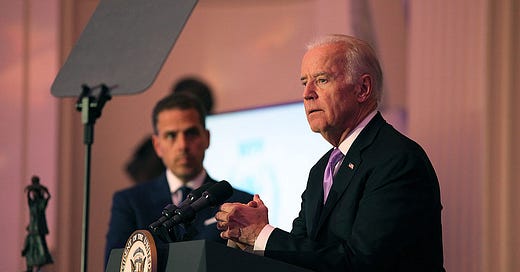

Discover more from Social Studies
Last month, the Art Institute of Chicago fired its unpaid docents. The 122 volunteers had given, on average, 15 years of their lives to the museum. Each of them had accumulated a level of knowledge of the museum’s collection worthy of a postgraduate degree. They had led tours for millions of people, including over 100,000 schoolchildren every year. They had even created a “bus fund” that had enabled thousands of kids unable to visit the museum to do so.
But all of that amounted to nothing in the face of the intractable problem the docents presented to the Art Institute’s refurbished, anti-racist self-image: the docents were too white, and too well-off.
Penny Fisher, one of the terminated docents, remembers countless meetings with museum administrators in which they had told the docents how much their work mattered. “This felt like the opposite,” Penny told me. “To be kind of summarily dismissed like this was not pleasant. I personally did not feel respected.”
In pre-pandemic times, Mandy Guzman, who has taught in Chicago public schools for 20 years, would take her students, who were overwhelmingly Latino, to the museum to see works by artists like Diego Rivera and Frida Kahlo.
“A lot of kids had never been to a museum before,” Guzman told me. “The docents made this inaccessible space accessible. I don’t think it even registered with my students that they were white. What mattered is that they connected with them, and showed them their culture was important enough to be in a museum."
If you've ever wondered what Ibram Kendi's vision of social justice would look like in real life, here’s a glimpse. It’s a world in which any institution with a racial disparity is presumed to be racist, and thus in need of either overhaul or abolition. It’s a world in which the ends justify the means, in which theoretical “justice” is achieved for abstract “communities” by committing concrete acts of injustice against actual, real people. It’s a world in which anyone harmed in the crusade to achieve its adherents’ vision of a good society is just so much collateral damage.
And it’s a world in which the richest, most high status people in America invoke the language of left-wing revolutionaries to deflect attention from their own privilege.
Kendian “Anti-Racism” is an ideology that explicity calls for policies of racial discrimination to mitigate the inequities of past racial discrimination. Not long ago, the very concept behind it was morally anathema to mainstream democratic values, on the left and the right alike. But the practice of discriminating by race in the name of anti-racism has become commonplace in mainstream Democratic politics today.
Two weeks ago, New York Mayor Bill de Blasio announced his decision to end New York City's Gifted and Talented program because of its overabundance of white and Asian kids. Two days later, a Colorado court enjoined the state from using skin color as a factor in deciding which small businesses to give Covid-19 relief funds to. Last spring, the city I live in, Oakland, implemented a supplemental basic income program for poor families that likewise used race as a criterion for eligibility, until it was forced to quietly walk it back after a spate of bad publicity. San Francisco instituted a similar program last year, exclusively for “Black and Pacific Islander birthing people.”
Recently, I obtained a document from the UC Berkeley Department of Sociology, where I got my Master’s degree many years ago. It was a proposal by an “Anti-Racist Working Group” of assorted grad students and faculty on how to make the department more inclusive. Part of the plan is to pay graduate students to do “syllabi revisions” of the professors’ classes, in order to ensure that courses at both the graduate and undergraduate levels “actively confront the legacies of racism within sociology.” These academic minders will “work with other instructors to revise their syllabi, including helping instructors identify work by Black and other scholars of color to include in their courses.” In other words, it’s a committee that monitors what professors teach to Berkeley students to make sure it’s in doctrinal alignment with the ideology of “Anti-Racism.”
Art museums, college prep track public education, academia, journalism, foundations, the non-profit sector, Hollywood, book publishing, the tech industry: these are the spaces where the new Anti-Racist movement is making its most visible impacts. It’s not by accident that these are the worlds of the elite and the pathways into the elite. Because what this movement is really about is policing the gates of these spaces, making sure that they project enough of a facade of egalitarianism to preserve the credibility of the stratified social order to which these institutions owe their very existence. This is why elite institutions have been so quick to not only embrace, but champion Kendian Anti-Racism. In an age of rampant inequality and simmering populism, its cosmetic demands work well for them.
The Chicago Art Institute has an endowment of $1.6 billion. Its director makes more than $1 million a year. The Anti-Racist non-profit that funded Oakland’s supplemental income program had $170 million in yearly revenue in 2020 and pays its CEO a yearly salary of $250,000. The foundation that underwrites San Francisco’s program has more than $107 million; its President makes nearly $400,000 in compensation. Last year, Ibram Kendi’s own institute, the Center for Antiracist Research at Boston University, was gifted $10 million by Twitter founder Jack Dorsey, and $1.5 million from a Boston pharmaceutical company. These are the people and organizations at the vanguard of this “anti-racist revolution.” It’s trickle-down liberation, with predictable results.
Last June, at the height of the pandemic and in the midst of riots sparked by George Floyd’s murder, the Art Institute of Chicago terminated 51 workers. It was the AIC’s second round of layoffs. The announcement was made in a Zoom call that lasted five minutes.
Employees lashed out at the museum leadership, accusing it of racism. A letter to management signed by close to 30 percent of the museum’s employees complained of decisions made by a “very small group of the most highly paid staff in the museum with privileged identities.”
The museum’s besieged administrators had a racism problem on their hands. The moment called for a racial reckoning, as such public relations disasters do. The administrators could have chosen to dip into its colossal endowment to hire back its laid off workers. Instead, it took the cheaper route: it turned to Anti-Racism.
Veronica Stein became the museum’s Learning and Public Engagement director in April, pledging to institute an “anti-racist curricula.” Soon after, the museum’s docents learned what, in 2021, those words actually mean. For the time being, they have been replaced by a handful of paid part time staffers making $25 an hour. In two years, the museum plans to reintroduce its docent program with new volunteers. The terminated docents have been invited to apply, but, presumably, few of the white ones will make the cut. That would defeat the entire purpose.
Trustee Robert Levy, a retired investment banker and a board member of Vanderbilt University who previously served on the boards of the University of Pennsylvania and the Wharton Business School, penned an op-ed in the Chicago Tribune, scolding critics of the layoffs for their refusal to “embrace change.” The layoffs, he claimed, would “center our visitors — most particularly our students across Chicago,” by depriving them of the people who know the museum better than almost anyone in the world. He trumpeted the museum’s intention to make its pivot to Anti-Racism “a new national arts education model.” Docents throughout the U.S., be warned.
The rhetoric from paternalistic millionaires like Levy has all the aesthetic trappings of “justice.” But what these race-based reforms are really about is protecting institutions, not people. They’re about bringing an aura of moralism to America’s cultural aristocracy, dressing up the dominant class as the vanquishers of the very hierarchy they preside over, and in so doing, preserving the waning legitimacy of our national pecking order. The inherent conservatism of Kendian Anti-Racism is obscured by the ostentatious left-wing, liberationist rhetoric it deploys. But look a little bit closer and you can see it for what it is: an ideological shield for the status quo.
Correction: A prior version of this piece described "The Anti-Racist non-profit that funded Oakland’s supplemental income program” as having “$170 million in the bank.” It’s been corrected to read that the organization had “$170 million in yearly revenue in 2020.”
Subscribe to Social Studies
Politics, media and social theory











The AIC should be ashamed of every part of this, starting with not paying the docents in the first place. That’s the whole reason the program was very white despite their recruitment efforts (lol, can you imagine them on South Side recruiting for an unpaid job?)
They were basically exploiting the elderly for free labor, and when they got called out for the demographics, they took this approach to improve the optics while spending the minimal amount of money. True justice would involve paying all workers—and it would make those DEI recruitment efforts a lot more successful too.
Segregation now, segregation tomorrow, segregation forever.
-Ibrahim Kendi